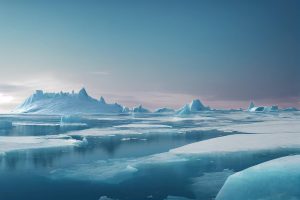
22 interesting facts about Petrification
- 👁️ 1050
Petrification, also known as petrification, is a fascinating geological process that turns organic materials into stone through the gradual replacement of the original material with minerals. This natural phenomenon captures a moment in time, preserving the intricate details of plants, animals, and sometimes even human-made objects for millions of years. Petrified objects offer invaluable insights into the Earth’s geological past, including the climate, environment, and ecosystem dynamics of ancient eras. The process reveals the intricate beauty of nature and the complex interplay between biological and geological processes. Here are 22 interesting and informative facts about petrification that showcase the wonder and significance of this natural process.
- Petrification occurs when organic material is buried under sediment, protecting it from decay.
- The most common mineral involved in petrification is silica, though other minerals like calcite and pyrite can also contribute.
- The process can take hundreds or even thousands of years to complete.
- Petrified wood is the most well-known result of petrification, with entire forests sometimes preserved in stone.
- The Petrified Forest National Park in Arizona, USA, is one of the largest and most famous concentrations of petrified wood in the world.
- Petrification can preserve the cellular structure of the original organism, allowing scientists to study ancient life at a microscopic level.
- The color variations in petrified wood are due to the presence of different minerals during the petrification process.
- Petrified fossils have been found on every continent, including Antarctica.
- Aside from wood, petrification can preserve bones, shells, leaves, and even soft tissues under the right conditions.
- The first step in petrification is permineralization, where mineral-rich water infiltrates the porous structure of organic material.
- Replacement, the second step, involves the original organic material being dissolved and replaced with minerals molecule by molecule.
- Opalization is a specific type of petrification where silica replaces the original material to form opal.
- Some petrified objects, like dinosaur bones, have been turned into precious stones such as opal and agate.
- Petrified wood is so durable it has been used as a construction material and decorative stone.
- The process can also preserve the soft parts of organisms, a rare occurrence that provides detailed insights into ancient life forms.
- Petrification is different from mummification, which preserves the original organic materials without replacing them with minerals.
- The world’s oldest petrified forest is located in Chemnitz, Germany, dating back approximately 290 million years.
- Pyritization is a form of petrification where iron sulfide replaces the organic material, often preserving fine details.
- Petrified objects are studied in the field of paleobotany to understand ancient plant life.
- Some petrified remains have been discovered with preserved DNA, offering a direct link to the past.
- Calcification is another form of petrification, involving the replacement of organic material with calcium carbonate.
- The term “petrified” is derived from the Greek word ‘petro,’ meaning rock or stone, indicating the transformation of organic material into rock.
Petrification offers a unique window into the past, capturing the essence of once-living organisms and preserving them in stunning detail for eons. This process not only highlights the beauty and complexity of nature but also serves as a crucial tool for scientific research, helping to unravel the mysteries of Earth’s geological and biological history. As researchers continue to study petrified remains, they uncover new insights into the evolution of life on our planet and the conditions that once prevailed. The enduring legacy of petrification reminds us of the dynamic interplay between life and the Earth’s geological forces.











